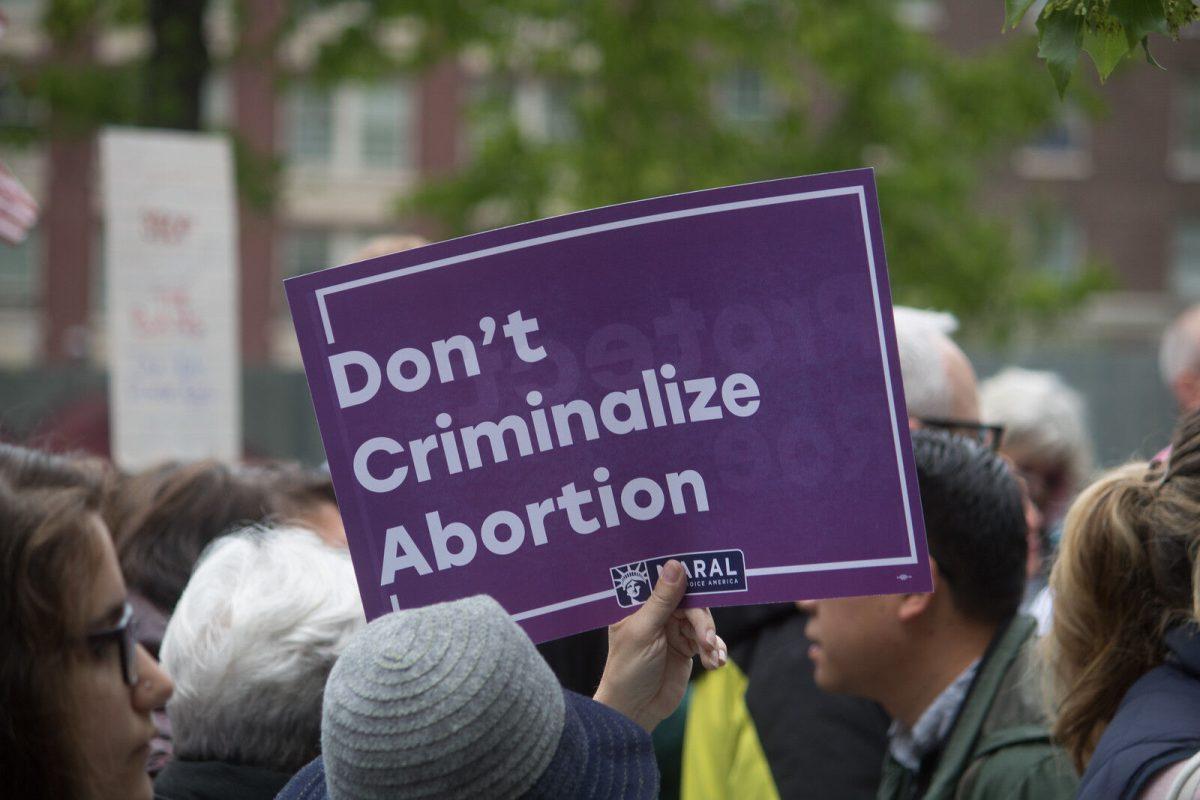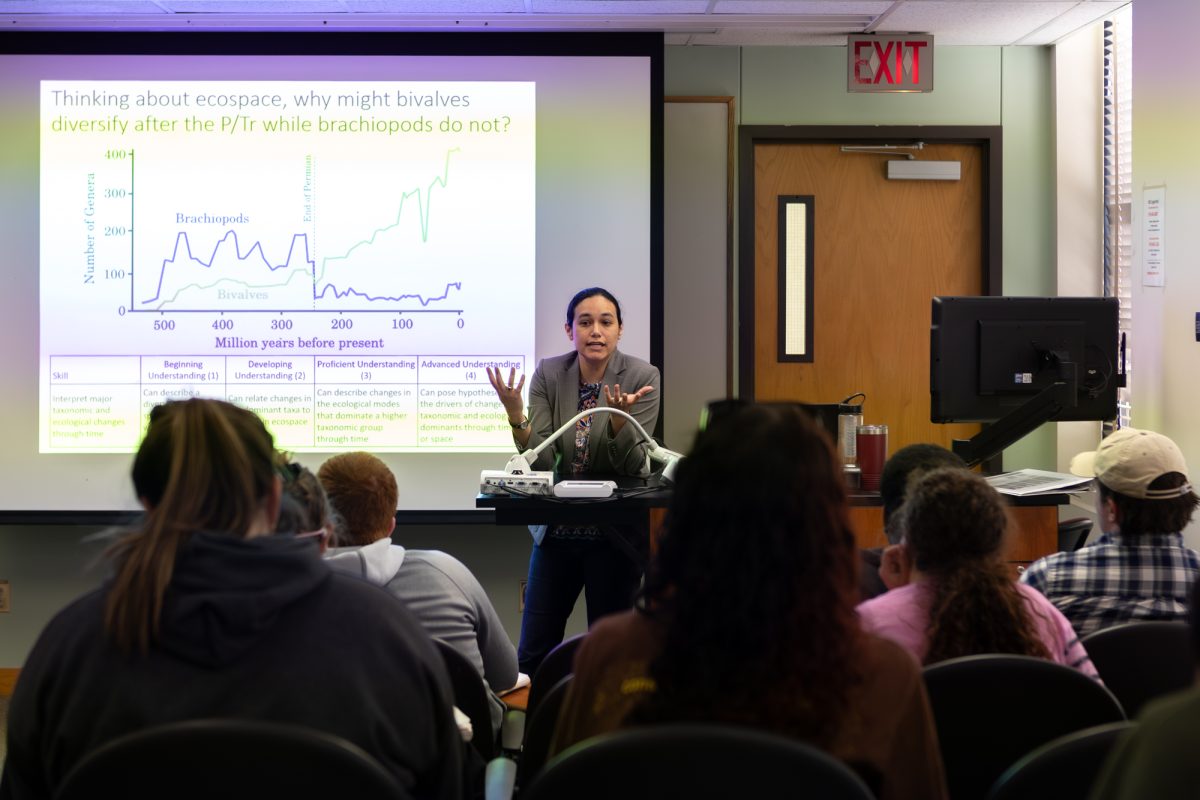The country seems keen on reversing a decision that was once cheered for 49 years ago. It feels as though every day in the news there’s a new and improved abortion ban in another state. But what’s the motive? To save the lives of unborn children, maybe. But, I wonder if it’s a bigger concept and one that isn’t as straightforward as just pro-life.
If you’re familiar with my articles and their typical content, you may think I’m beating a dead horse by continuing to write on this oh-so-controversial topic. But I’d disagree. It’s important to continue to talk about subjects, even when it seems redundant because eventually, in time, opinions shift and so does knowledge.
On April 7, Lizelle Herrera was arrested on murder charges for a “self-induced abortion.” What’s peculiar is the fact that Senate Bill 8 explicitly explains that the charges are strictly civil, not criminal. Hence the shock and horror when the news broke that Herrera was arrested for murder.
Her charges have since been dropped, but that doesn’t alleviate the tense and fearful environment that has now been created. Women across the state who have received an abortion, either in-state or someplace else, will now avoid physician clinics out of fear of murder charges. Women will resort back to archaic methods to avoid speculation. It’s a problem that should’ve been solved 49 years ago, but here we are.
There’s been an uptick of states passing some variation of the same abortion bill.
Florida most recently passed a bill that bans abortions after 15 gestational weeks. Before then, Oklahoma’s governor signed a bill making anyone who performs an abortion worthy of a felony charge in almost every circumstance, except medical emergencies. Along with these states is Kentucky, Arizona, Idaho, Wyoming and of course, Texas.
Roe v. Wade allows women the right to bodily autonomy given that they’re not trying to abort a viable fetus, which can survive outside of the womb. In the 1970s, that would be about a 28-week fetus. However, with today’s technology and medical advancements, that age is about 24 weeks. If a child is born so prematurely, and they survive, they’re more than likely going to have permanent disabilities.
This bill grants women their right to their body and their right to make decisions that they believe are best for themselves and their pregnancy. It’s not all rainbows and butterflies when making such a difficult decision. I highly doubt there is a high number of women who enjoy getting an abortion or use it as a form of birth control. It’s a decision that stays with women for the rest of their lives. But, ultimately, it’s their decision for what is best for their particular circumstance.
It’s not anyone else’s responsibility, let alone their business, to determine what is a good enough reason to have an abortion. Any reason is a good enough reason because it’s their body. Regardless, if that reason is financial, situational, emotional or anything else, it’s not the government’s choice — it’s a woman’s.
But if you do need a reason why, then a study from BMC Women’s Health in 2013 may shed some light. It found that the reasonings for choosing an abortion are complex and not linear. Instead, it could be a singular issue or a multitude of things, like socioeconomic status, age, partners, health, other children, etc. There isn’t a black and white reason for this decision, and there shouldn’t have to be.
For a government that is so concerned with the lives of its unborn children, there seems to be little to no regard for them once they’re out of the womb. Fine, ban abortion, but will you provide the resources and funds to care for these children? Or, will you be satisfied that after forcing women to give birth, they’ll then place their children into the crumbling foster system?
For reference, this system invests less than 50% of what the average American family pays to raise a child. Children in foster care are four times more likely to attempt suicide. They are also four times more likely to be sexually abused, and when placed into a group home, children are 28 times more likely to be physically abused.
No wonder women don’t want to place their children up for adoption.
If we do in fact outlaw abortion, then we’ll need to address several disturbing issues within our system.
The lack of insurance could be a start. At the beginning of 2021, 31.1 million people didn’t have health insurance. If there was more affordable access to health insurance, then more families would be able to cover the price of prenatal appointments and care, contraceptives and 18 years of child care.
Another thing to alter would be our approach to sex education in schools. In Texas, schools are not required to include sex education in their curriculum, but if they do, they have to emphasize abstinence. Spoiler alert: abstinence teachings do not result in less teenage sex; they result in unsafe teenage sex.
In 2020, 40% of teenagers reported being sexually active. Now, unless we’re planning on strapping a chastity belt onto every 15-year-old girl, we, as a state and country, need to start becoming more realistic.
One in four women will experience severe intimate partner physical violence, sexual violence and/or stalking from an intimate partner. In 2020 alone, Texas reported 228 people were murdered by their intimate partners. Some would argue these victims could’ve gotten away, but nearly half of adult victims were turned away from domestic violence shelters due to a lack of space. If there were programs in place that successfully curbed domestic violence and sexual abuse, it wouldn’t be surprising to see abortion rates decrease.
A literature review was published that examined the relationship between domestic violence and abortion. Women are more likely to terminate their pregnancies when their male partner is controlling and isolating them. There is also the added desire for an abortion when women are unable to escape from their dangerous situation and already subject to physical, sexual and emotional abuse. Not wanting their child to be subjected to this violence, they terminate these pregnancies.
Banning abortions will never stop them. I’m not sure how many times I have to reiterate this fact, but I will until it becomes known to at least one person. Look back on the history of bans — prohibition didn’t last a second, people still smoke marijuana and George Orwell’s “1984” remains a best seller.
Banning doesn’t stop the act from being done. Implementing more resources decreases those issues. In the case of abortion, no matter where you side, prohibiting the procedure will not decrease the cases, but only make them more dangerous.
To Florida, Oklahoma, Texas and all alike: Restructure your approach and I guarantee abortion rates will fall and approval ratings from all sides will rise.
Kaelin Connor is a psychology senior and opinion columnist for The Battalion.



























